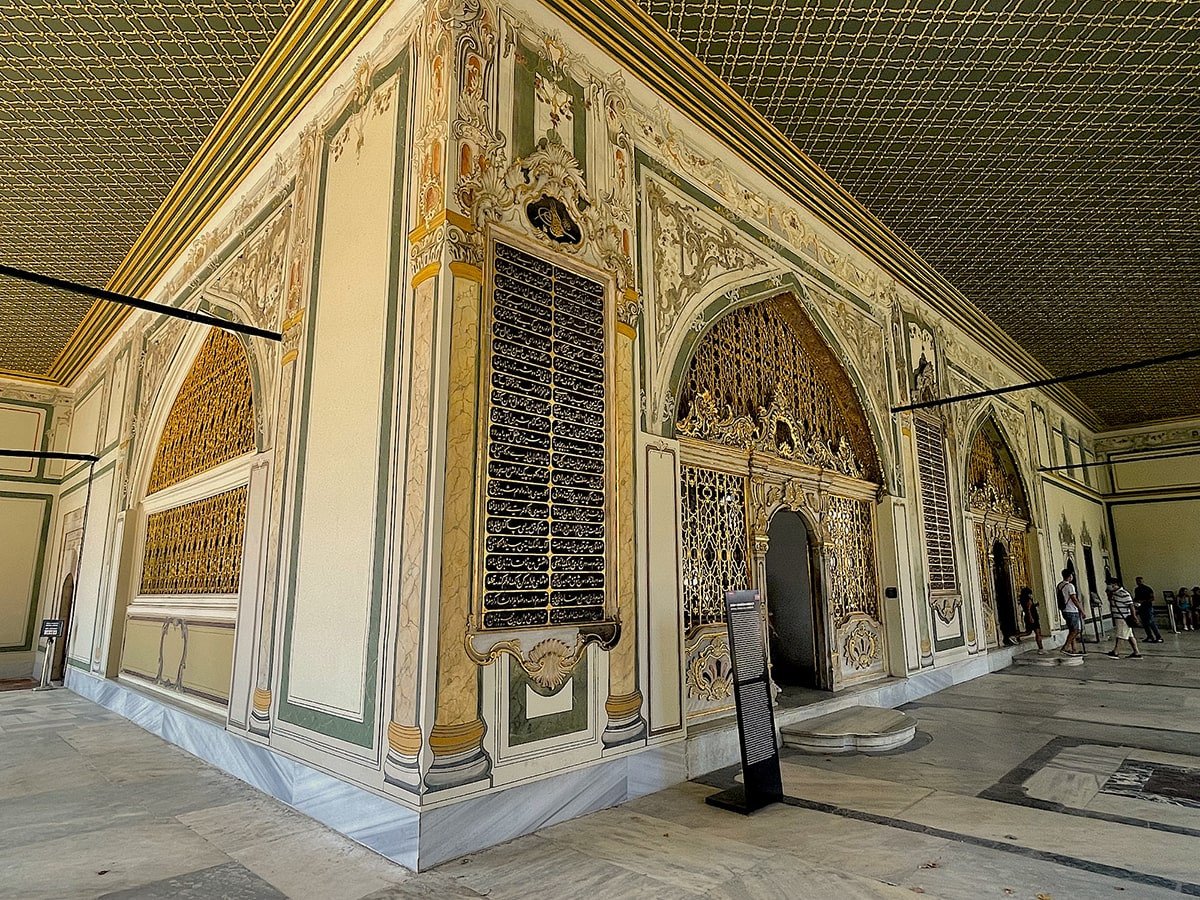Divan of the Topkapi Palace
Everything you need to know before visiting Topkapi Palace Museum
- Home
- Divan of the Topkapi Palace
Divan of the Topkapi Palace
The imperial council would gather here four times a week to discuss the state affairs. These meetings would last for hours, from very early in the morning into the afternoon. Here we can imagine a cabinet meeting among the bureaucratic and military elite under the leadership of the grand vizier, who was second to the sultan in the imperial order. These halls held many receptions, which was whenever envoys from other parts of the world visited the palace. Another frequent use of this room was for trials. Hearings of lawsuits covered a significant portion of the time spent here. The adjoining second room that had once been separated by a curtain was used by secretaries, clerks and officers. The small door at the end would open into the archives, then referred to as “the ink hall.”
This "ink hall" is now showcasing the Clocks & Watches of the Ottoman Sultans in the Topkapi Palace Museum. This part is nowadays famous for its international collection which mainly exhibits exquisite Turkish, French, and British clocks. There is also a small number of Russian and German samples. The larger room covering the entire corner with its pink cement and white stone walls had been the state treasury, also called as "Outer Treasury". Nearly 400 weapons are on display here including swords, maces, arrows, bows, shields, helmets, armor, pistols, and rifles of superior quality with floral and figurative ornaments. Arab, Mamluk, Iranian and Turkish weapons have a significant portion of these exhibitions. The personal weapons of sultans are organized here in chronological order.

